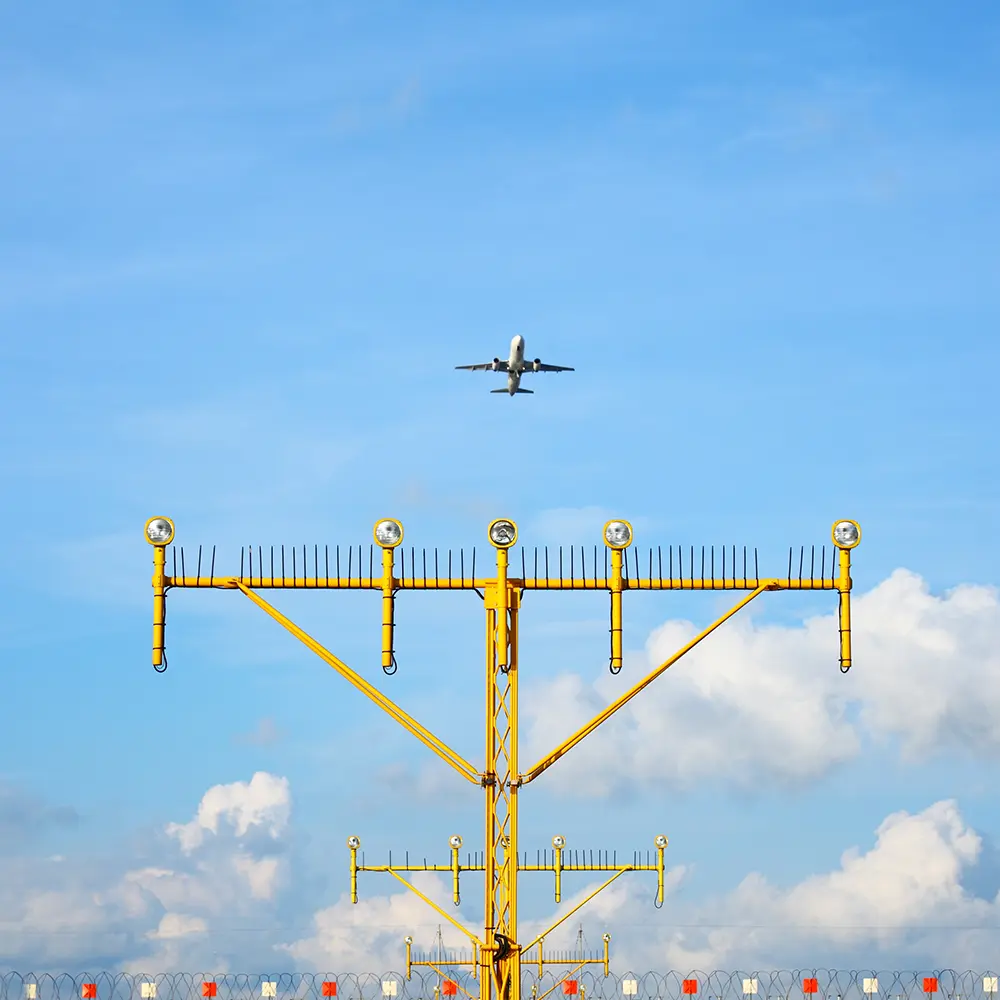

World Tesseract Communications
The WTC company develops and mass-produces communications, navigation, landing, surveillance and air traffic control automation equipment, as well as develops and implements complex projects for equipping and re-equipping civil airfields and air traffic control centers.

We develop and mass-produce equipment for...

Communication systems
WTC-521 COMPATIBLE DATA RECORDING AND PLAYBACK SYSTEM
WTC-521 is designed for recording voice messages and data via analogue and digital radio channels, telephone/speaker communication, surveillance information, planned information, meteorological information, information displayed on the dispatcher’s monitor, control room control information from video cameras and microphones, as well as for creating an archive recorded information on hard drives and long-term (removable) media, playback of recorded information from the online access archive and from the archive on long-term (removable) media
| Number of working positions subject to “passive” recording, max. | 50 |
| Number of analog voice signals to be recorded, max. | 200 |
| Number of digital voice signals to be recorded, max. | 200 |
| Information storage time, days | ≥ 30 |
| Types of supported digital and analog channels | Е1/ ISDN PRI; ISDN BRI; VoIP (RTP). |
| Types of recorded information | Voice information (radio- and telephone communications) and data (surveillance, planned information, weather information, information from video cameras, etc.), as well as information displayed on the controllers’ monitors that are part of the automated working positions of the ATC Automation System. |
| Types of synchronization | Based on single time signals from an external single time source using the NTP Protocol. |
| Operating temperature range, °C | from 5 to 40 |
| Relative humidity at a temperature of plus 25 °C, %, maximum | 80 |
| Atmospheric pressure in the range, mm Hg, | from 525 to 790 |
| Readiness time after power-up, min., max. | 5 |
| Battery life in case of power-supply failure (when a UPS is included in the CDR-2700), min. | 30 |
| Playback | The separate playback station (SPS) provides multimedia (synchronous audio and video) real-time playback of recorded information on the TMCS and SPS, including from IP-cameras, up to four audio channels and two channels of surveillance data or video. The time of retrieving information from the operational and long-term archives does not exceed 2 minutes. |
| Technical monitoring and control | The technical monitoring and control station (TMCS) provides monitoring and control of product components, including control of hard drives and long-term (removable) media (when connected), with the appropriate indication of the fault status when connected via LAN. Shifting the TMCS from the servers, maximum 100 m along the LAN cable route. |
WTC-2565 voice communication system
WTC-2565 voice communication system is designed to be used in air traffic management centers (ATM) in order to provide operational controller radio- and telephone communication of air traffic controllers/ planners with aircraft crews, interacting ATM services and units, departmental and airport services.
WTC-2565 provides advanced performance features such as minimal connection time, high fault tolerance, and operational availability, wide scalability, an extensive range of interfaces that provide the ability to interface with both legacy and advanced radio- and telephone-communication equipment, as well as provides the operator with a variety of basic and additional services.
Technical advantages
WTC-2565 FUNCTION / PERFORMANCE PARAMETERS ADVANTAGE
| Features | Advantages |
|---|---|
| System Subnetworks A and B |
|
| Decentralized Processor Units |
|
| Compact Touch Entry Device (TED) |
|
| Controller Working Position Equipment |
|
| Radio Station Switchover |
|
| User Roles Activation |
|
- aviation
- radio navigation flight support system
- communication and data transmission facilities
- simultaneous control of 25 frequency channels
- locking the footswitch
- footswitch priorities
- frequency retransmission
- frequency forwarding
- radio channel intercom
- selection of the best signal from 6 radio stations
- trouble-free footswitch
- selection of audio devices for each channel
- volume control individually for each channel and / or radio centre
- remote radio control (frequency tuning, emission mode selection, emission power setting, etc.)
- display of up to 300 direct access subscribers
- priority call
- hotline call
- conference call
- call hold
- single call forwarding
- group call forwarding
- call queue display
- call signal setting
- signal level adjustment
- telephone connection capability with a footswitch (simplex simulation)
- 25-50 Hz local battery call
VHF and UHF Antennas
The WTC2000V Antenna is designed for receiving and transmitting high frequency signals with vertical polarization in the frequency range from 118 MHz to 137 MHz.
The antenna suppresses surface currents and provides high protection against lightning strikes by short circuits of the radiating surfaces on the direct current. The short circuit is provided by a connecting tube placed inside the vibrator. The construction of the antenna allows it to resist high wind forces and mechanical loads and provides a low wind profile. The low weight and small dimensions are additional benefits of the antenna.
ANTENNA WTC2000V
The WTC2000V Antenna is designed for receiving and transmitting high frequency signals with vertical polarization in the frequency range from 118 MHz to 137 MHz.
The antenna suppresses surface currents and provides high protection against lightning strikes by short circuits of the radiating surfaces on the direct current. The short circuit is provided by a connecting tube placed inside the vibrator. The construction of the antenna allows it to resist high wind forces and mechanical loads and provides a low wind profile. The low weight and small dimensions are additional benefits of the antenna.
ANTENNA WTC2001V
Aerial WTC2001V is designed for reception and transmission of HF vertical polarization signal and transmission of HF vertical polarization signal in the frequency range of 100—165 МHz.
The aerial is painted with powder polyether paint RAL 3000 (red as the main color). Subject to the customer’s wishes the color may be changed to RAL 7035 or RAL 6003. The paint is applied by spraying enamel powder which provides high quality weather-resistant coating.
ANTENNA WTC2003W
The WTC2003W Antenna is designed for receiving and transmitting high frequency signals with vertical polarization in the frequency range 100 MHz to 400 MHz.
One of the special features of this antenna is its capability to suppress surface currents. The construction of the antenna allows it to endure high wind force and mechanical loads and provides a low wind profile. The low weight and small dimensions are additional features of the antenna. The antenna is painted with polyester powder paint RAL 3000; the color can be changed if needed to paint RAL 7035 or RAL 6003.
ANTENNA WTC2004V
WTC2004V is designed for reception and transmission of HF vertical polarization signal in the frequency range of 118—137 МHz.
WTC2004V is painted with powder polyether paint RAL 3000. Subject to the customer’s wishes the color may be changed to RAL 7035or RAL 6003. The paint is applied by spraying enamel powder which provides high quality weather-resistant coating.

World class quality is our priority

Navigation and Surveillance Systems
WTC2700 Multiliterate and ADS-B System
WTC2700 is the state-of-the-art scalable, modular solution for providing aeronautical surveillance using multiliterate (MLAT) and automatic dependent surveillance – broadcast (ADS-B) technologies. WTC2700 detects and tracks aircrafts (ACs) and other targets equipped with Mode A/C/S transponders, as well as with ADS-B 1090ES (extended squitter) transmitters. Due to modular architecture WTC2700 could be adapted/extended to fulfill different surveillance applications, either separately or in conjunction
- Surveillance of ACs and vehicles on the aerodrome surface (A-MLAT);
- Surveillance of ACs in the final approach phase (PRM approach);
- Surveillance of ACs in the terminal area and/or en-route airspace (WAM);
- Providing information contained in the extended squitters transmitted by ACs and/or vehicles equipped with ADS-B 1090ES transmitters;
- Extraction of on-board aircraft systems parameters using the ground-initiated Comm-B (GICB) protocol;
- The passive surveillance feature;
- Monitoring of the information integrity transmitted in the extended squitters of ACs and/or vehicles equipped with ADS-B 1090ES transmitters;
- Height-monitoring unit (HMU).
WTC2700 fully meets the requirements of EUROCAE documents ED-117A, ED-142, ED-129B. Ready to provide Composite surveillance functionality (ADS-B and WAM) in line with future ED-142A.
Ground receiving stations:
- High reliability (MTBF, MTTR);
- Receiver with three independent receiving channels and sector (120⁰) antennas provide high spatial selectivity of signals and the ability to detect spoofing;
- Unique proprietary algorithms for decoding RF signals provide high efficiency of detecting useful signals in the presence of synchronous and non-synchronous interference and high accuracy of signal timestamp.
Central processing unit:
- Best performance in the market (up to 400 ground stations can be connected and up to 1024 targets can be processed simultaneously);
- Hot redundancy concept;
- MLAT/ADS-B composite surveillance functionality in line with future ED-142A;
- ADS-B data validation using multilateration (2D/3D) and direction finding of signals;
- Standard ASTERIX output (any other protocol is appropriate at the customer request);
- Multiple data output (8 or more directions) with individually configurable parameters;
- Three data output modes to ensure compatibility with any type of surveillance data processing and display systems:
- “Data driven mode”: is appropriate for surveillance processing systems capable of handling high data rates and non-periodic update;
- “Periodic mode”: is for legacy surveillance processing systems that can process data with a constant update period (“quasi-radar” mode);
- “Periodic predicted mode” (“tracker” mode): is intended to provide a suitable input for a direct controller plot display (system without an surveillance data processing tracking system of its own).
Control and monitoring terminal:
- real-time comprehensive monitoring of the status and parameters of system components;
- failure identification and isolation at the standard line replaceable units (LRU) level;
- user friendly interface;
- remote control and monitoring of operation of the system and its components;
- recording of all incoming and outputting information, data logging for a period of minimum 1 month, as well as extensive options of playback;
- convenient application for display of the current air situation and system performance (MLAT / ADS-B tracks/plots with extensive options for configuring display labels), the function of superimposing aeronautical and cartographic information, changing the display scale.
- The maximum number of simultaneously tracked targets – 1024 targets
- The maximum ground stations number to be connected to central processing unit – 400 GS
- The ability to increase or alter the coverage volume or the system performance through the addition or redeployment of receiveing and/or transceiving stations – Provided
- Horizontal position measurement error within areas of optimal geometry conditions (RMS) – 1 meter
- Vertical aircraft position measurement error between FL 290 and FL 410 inclusive (RMS) – to within 10 meter
WTC-6754S S-band primary surveillance radar with monopulse mode S secondary surveillance radar
Purpose
The new generation airfield radar has advanced capabilities of detection of aircraft position in terminal areas and provides conditions for transition to reduced separation rules in terminal areas with the aim of capacity improvement of the aerodromes.
Key Features
Hardware
- Use of up-to-date electronic components and engineering solutions allows to place all the hardware of primary and secondary channels in one standard cabinet;
- Minimization of the dimensions of the hardware allows, in turn, to increase the reliability of the radar and to place all the hardware in one shelter, and to install the shelter itself directly on the mast.
Antenna of the primary channel
- emitter-polarizer is placed outside the beam, which allows to increase the gain and reduce the side-lobe level;
- integrated dipole of the test generator that allows to test the whole processing path, including the antenna.
Drive string
- in the drive string, control signals to an antenna and status signals from the antenna are transmitted in a noncontact manner, that is why there are no slip rings in the string, the sliding contacts of which often lead to failures of radars;
- position sensors of the antenna are directly connected to the antenna; such transmission does not have backlash and kinematic errors, which allows high-accuracy measurement of rotation angle of the antenna.
Ground receiving stations:
- High reliability (MTBF, MTTR);
- Receiver with three independent receiving channels and sector (120⁰) antennas provide high spatial selectivity of signals and the ability to detect spoofing;
- Unique proprietary algorithms for decoding RF signals provide high efficiency of detecting useful signals in the presence of synchronous and non-synchronous interference and high accuracy of signal timestamp.
Central processing unit:
- Best performance in the market (up to 400 ground stations can be connected and up to 1024 targets can be processed simultaneously);
- Hot redundancy concept;
- MLAT/ADS-B composite surveillance functionality in line with future ED-142A;
- ADS-B data validation using multilateration (2D/3D) and direction finding of signals;
- Standard ASTERIX output (any other protocol is appropriate at the customer request);
- Multiple data output (8 or more directions) with individually configurable parameters;
- Three data output modes to ensure compatibility with any type of surveillance data processing and display systems:
- “Data driven mode”: is appropriate for surveillance processing systems capable of handling high data rates and non-periodic update;
- “Periodic mode”: is for legacy surveillance processing systems that can process data with a constant update period (“quasi-radar” mode);
- “Periodic predicted mode” (“tracker” mode): is intended to provide a suitable input for a direct controller plot display (system without an surveillance data processing tracking system of its own).
Control and monitoring terminal:
- real-time comprehensive monitoring of the status and parameters of system components;
- failure identification and isolation at the standard line replaceable units (LRU) level;
- user friendly interface;
- remote control and monitoring of operation of the system and its components;
- recording of all incoming and outputting information, data logging for a period of minimum 1 month, as well as extensive options of playback;
- convenient application for display of the current air situation and system performance (MLAT / ADS-B tracks/plots with extensive options for configuring display labels), the function of superimposing aeronautical and cartographic information, changing the display scale.
- The maximum number of simultaneously tracked targets – 1024 targets
- The maximum ground stations number to be connected to central processing unit – 400 GS
- The ability to increase or alter the coverage volume or the system performance through the addition or redeployment of receiveing and/or transceiving stations – Provided
- Horizontal position measurement error within areas of optimal geometry conditions (RMS) – 1 meter
- Vertical aircraft position measurement error between FL 290 and FL 410 inclusive (RMS) – to within 10 meter
WTC2/457 Doppler VHF Omnidirectional Radio Range
Purpose
The Radio Beacon is designed to generate and transmit radio signals which provide measuring of the azimuthal angle of an aircraft equipped with VOR avionics. The Radio Beacon is used in airports and on routes of civil aircrafts.
Performance Capabilities
The WTC2/457 Radio Beacon has the signal format of VOR avionics and conforms to the requirements applied to this equipment as set forth in «Appendix 10 to Convention on International Civil Aviation (ICAO)». The Radio Beacon can be used in package with distance measuring DME/N Radio Beacon as well as independently.
Main Technical Specifications
- in the horizontal plane – 360°
- in the vertical plane – 40°
- in the range (in conditions of direct visibility), at least – 340 km (at the flight altitude of 12 000 m) – 240 km (at the flight altitude of 6000 m)
- Inaccuracy in data regarding azimuth – ±1°
- Frequency range – 108.000–117.950 MHz
- Signal parameters (reference phase, alternating phase, detection, radiotelephone communication) – As required by ICAO
- Control over the main parameters (azimuth and signal strength) – As required by ICAO
- Azimuth measurement range – 0° to 360°
- Azimuth measurements inaccuracy – ±0.2°
- Hardware (width × length × height) – 2.5 × 4.5 × 2.7 m
- Aerial assembly (diameter) – 13.5 m
- Aerial assembly reflective unit (diameter) – 30 m
- Main and reserve network – 3 ~ 380/220 (+10 %; -15 %) V, 50 Hz
- Power consumption of the main equipmen, at most – 2 kVA
- Power consumption when the thermoregulation system is on, at most – 8 kVA
- Operational time from UPS (storage battery), at least – 30 minutes
- Equipment outside of the container: environment temperature – −50°С to +50°С
- precipitation effect (rain intensity), at most – 3 mm/min
- wind force effect (wind speed), at most – 50 m/s
- Equipment inside of the container – −0°C to +50°С
- MTBF, at least – 30 000 hours
- Life cycle – 15 years


Contact information
- WorldTesseract Communications SAS DE CV
-
San Isauro 221, Pedregal de Santa Ursula Coyoacan
Ciudad de Mexico
04600 - info@worldtesseract.mx
